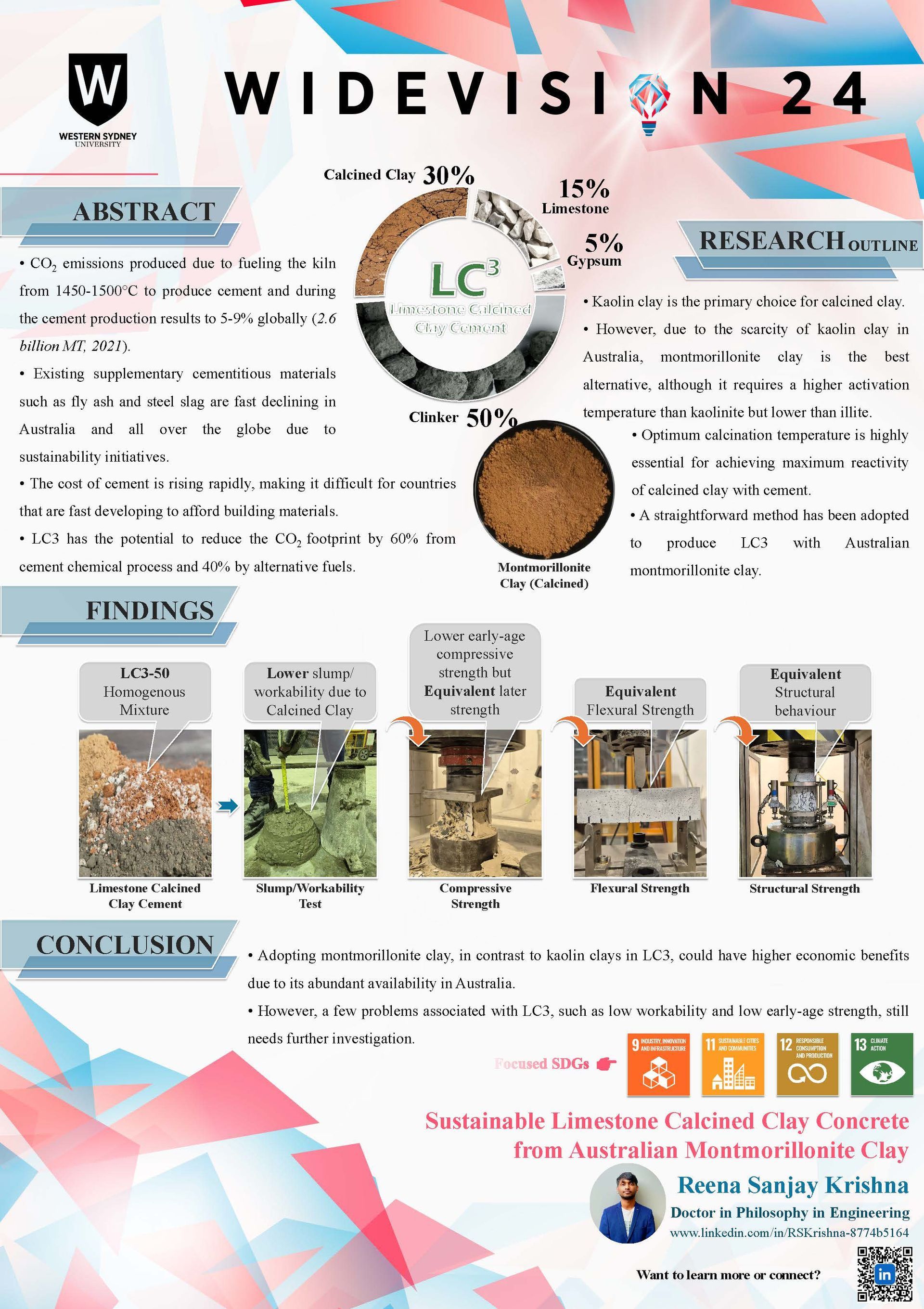Krishna is a second-year doctoral researcher from the School of Engineering, Design and Built Environment who has been researching on the utilisation of different waste and local clay varieties in Australia. His goal is to use these clays to develop economical limestone-calcined clay cement (LC3) which aids in carbon mineralisation and hence reduces cement carbon emissions. He has been awarded the Australian Government (Research Training Program) Scholarship for Higher Degree Research and has also been supported through the CSIRO Top-up scholarship. Krishna is currently working under the supervision of Dr. Cheng (Jason) Jiang and Professor Zhong Tao. He is a published author of around 29 publications including journal articles, conference proceedings and book chapters.
Reena Sanjay Krishna
Development of Economic Low-Grade clay-based LC3 Composites for Construction Applications
PROJECT

With respect for Aboriginal cultural protocol and out of recognition that its campuses occupy their traditional lands, Western Sydney University acknowledges the Darug, Eora, Dharawal (also referred to as Tharawal) and Wiradjuri peoples and thanks them for their support of its work in their lands in Greater Western Sydney and beyond.
Acknowledgement of Country
Western Sydney University Copyright © 2004-2024 | ABN 53 014 069 881 | CRICOS Provider No: 00917K | TEQSA Provider ID: PRV12061 (Australian University)

